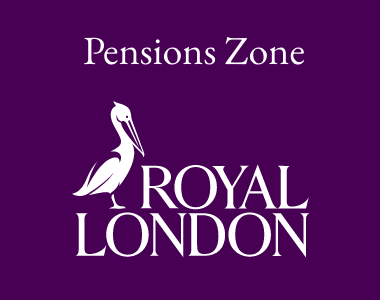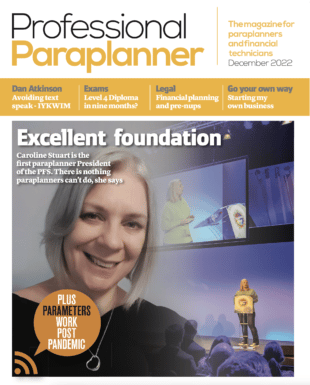The Brand Financial Training team examine the the rules around the residence nil rate band, providing examples to help clarify how the rules apply in practice.
The residence nil rate band (RNRB), introduced with effect from 6 April 2017, was probably the biggest change in Inheritance Tax allowances since the introduction of transferable nil rate band in October 2007. It helped to reduce the impact of Inheritance Tax which had increased due to the freezing of the nil rate band from April 2009 at £325,000.
The RNRB was originally set at £100,000 in tax year 2017/18 and gradually increased until by, tax year 2020/21, it had reached £175,000. It is planned that it will stay at this level until the end of 2025/26.
It is designed to protect some or all the value of the family home from inheritance tax with a main condition that the deceased must have owned and lived in the residential property at some point prior to their death. If the deceased had downsized or fully disposed of their property after 8 July 2015 then downsizing provisions apply which we cover later.
The other main requirement is that the property must be ‘closely inherited’ this means inherited by ‘direct descendants’. This means:
- The deceased’s children, grandchildren or remoter descendants (‘Children’ includes adopted, fostered and stepchildren)
- The spouses/civil partners of those children/grandchildren
Direct descendants example: John, a divorcee, died in 2020/21 leaving an estate valued at £800,000 which included his property which was valued at £300,000. He left a 50% share of the property to his partner and the other 50% to the children from his marriage. John’s estate will benefit from a residence nil rate band of £150,000 as the RNRB is limited to the value inherited by his direct descendants. John’s estate will also benefit from the standard nil rate band of £325,000.
Tapering
The RNRB is reduced by £1 for every £2 that the estate exceeds £2m. The definition of estate for RNRB purposes is different to its general meaning for IHT purposes, so the total estate includes assets that would not be liable to IHT – for example AIM shares and gifts to charity made in the Will.
Tapering example: Sue, a widow, leaves an estate valued at £2.1m which includes AIM shares valued at £150,000 and her property valued at £600,000. Her Will leaves £200,000 to charity and the rest to her two children. Sue’s husband used his nil rate bands when he died.
Sue’s total estate for RNRB purposes exceeds the £2m limit by £100,000 so her RNRB will be reduced by £50,000 down to £125,000 giving her estate a total NRB of £450,000.
When the IHT liability on Sue’s estate is calculated the value of the AIM shares and the gift to charity will be deducted as they qualify as reliefs/exemptions, so her estate will be:
£2.1m less value of AIM shares less gift to charity = £1.75m less NRB (£325,000) and tapered RNRB (£125,000) = £1.3m
Brought Forward Residence Nil Rate Band
The brought-forward RNRB applies to married couples and civil partners but not couples that co-habit. As with the standard NRB, it allows unused RNRB to be transferred to the estate of the surviving spouse/partner. It doesn’t matter when the first person died but the second spouse/partner must have died after 6 April 2017. If someone has been widowed more than once then they can transfer any unused RNRBs but only up to the value of one extra RNRB.
- If the first death occurred before 6 April 2017 the residential enhancement at that time is deemed to have been £100,000
- As there was no RNRB at that time none could have been used
- The brought forward amount is 100% of the residential enhancement in force at the second death
- Tapering would apply if the first to die left an estate of more than £2m
Brought forward example: Helen and Ian were married when Ian died in 2019/20 leaving his £2.12m estate to Helen. The RNRB in 2019/20 was £150,000.
- Ian’s estate exceeded the RNRB limit by £120,000
- This would have reduced his RNRB by £60,000 to £90,000
- £90,000/£150,000 = 60%
Helen died in 2020/21 leaving an estate of £2.3m which included her home valued at £1.2m which she left to her children.
- Helen’s RNRB (including the brought forward amount) is £175,000 + (60% of £175,000) = £280,000
- This must be tapered as Helen’s estate exceeds the RNRB limit by £300,000
- This will reduce her RNRB by £150,000 to £130,000
- Helen’s total NRBs will be:
- Her NRB – £325,000 plus
- Ian’s transferred NRB – £325,000 plus
- The total RNRB – £130,000 giving a total of £780,000
Downsizing
An individual may qualify for a downsizing addition if, after 8 July 2015, they
- Disposed of an interest in a residential property
- Downsized to a smaller property or stopped owning a home completely
- Left some of their estate to ‘direct descendants’
Downsizing example:
John was a widower when he sold his £240,000 home in September 2018. The RNRB at the time was £125,000. He moved into residential care and died in 2021/22. John’s wife died before 6 April 2017 leaving all her assets to him.
- RNRB when property sold + brought forward RNRB on death
- £125,000 + 100% of £175,000 = £300,000
- Value of home when sold as a percentage of this figure
- £240,000/£300,000 = 80%
- Subtract value of home in estate – there is no home in the estate on death so 0%
- 80% – 0% = 80%
- Multiply maximum RNRB at death by this figure
- 2 x £175,000 x 80% = £280,000
- John’s RNRB will be the lower of £280,000 and the assets left to direct descendants
Trusts
Prior to the introduction of transferable nil rate bands in 2007, a commonly used IHT planning tool was for a married couple or civil partners to include a nil rate band discretionary trust in each of their Wills as, if the first to die did not use their nil rate band, then it was lost. The surviving spouse/civil partner could benefit from the trust but the value of the trust would not normally count towards their estate on second death.
Here’s an example:
Jason and Amy own their property as tenants-in-common. They want to ensure that, on first death, the survivor could remain in the property but, on their death, their share of the property would pass to their children (or other direct descendants)
In their Wills they could include an Immediate Post Death Interest Trust (IPDI). On first death the deceased’s share of the property would pass into the trust, the survivor would be able to live there for the rest of their life, but it would then pass to the children. On second death the value of the trust’s assets would be included in their estate but their RNRB plus a brought forward RNRB would be available. (If the property had been owned as joint tenants this would not work as the property would automatically pass to the survivor on first death). This arrangement would protect the children of the marriage should the survivor re-marry.
If the property were to pass to a Discretionary Trust then the RNRB would not be available as property would not be deemed to have been ‘closely inherited’.
About Brand Financial Training
Brand Financial Training provides a variety of immediately accessible free and paid learning resources to help candidates pass their CII exams. The resource range ensures there is something that suits every style of learning including mock papers, calculation workbooks, videos, audio masterclasses, study notes and more. Visit Brand Financial Training at https://brandft.co.ukThe Brand Financial Training team examine the the rules around the residence nil rate band, providing examples to help clarify how the rules apply in practice.































